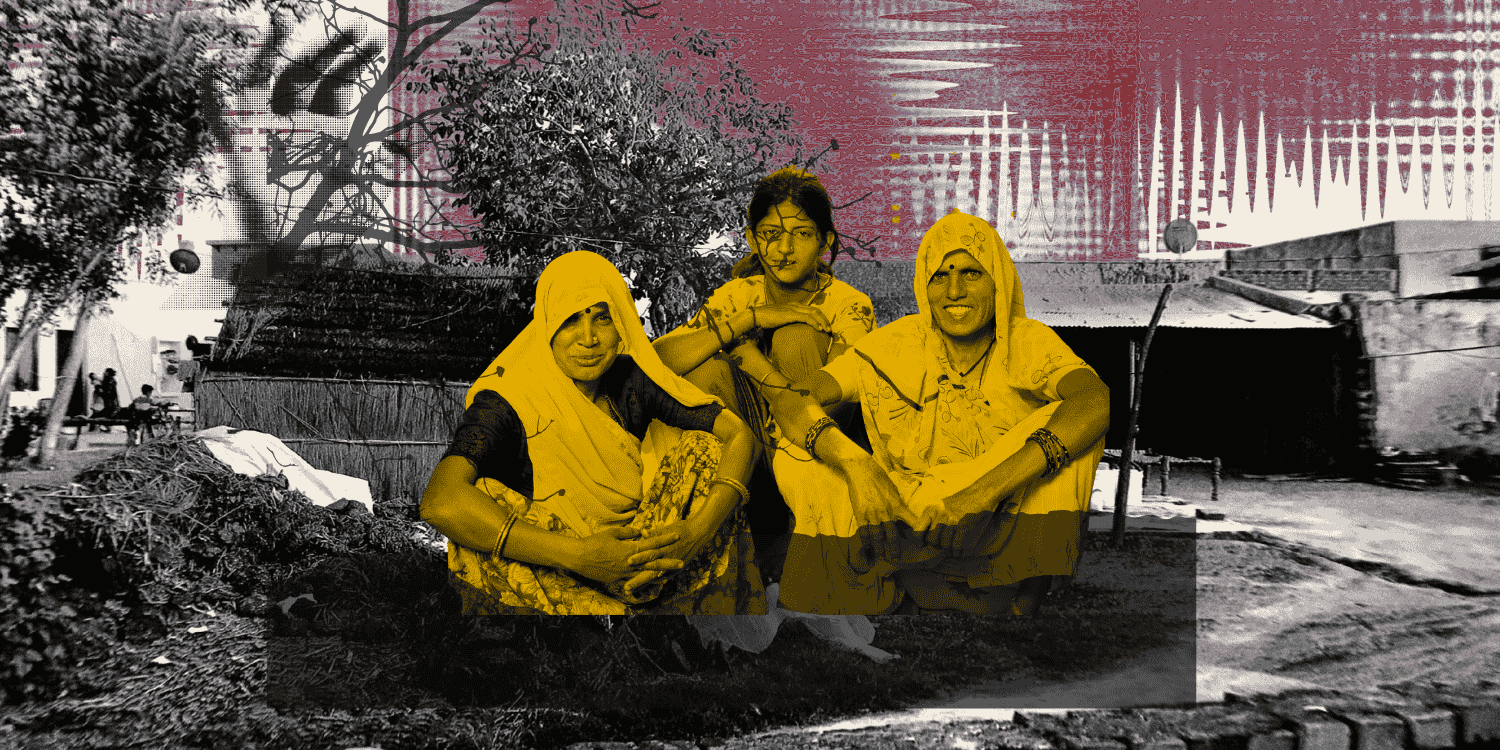Abstract
India’s considerably vibrant democracy has now accepted a new form of welfarism reflected through party politics and electoral promises. As the country gears up for the 2024 elections, it is increasingly evident that competitive welfarism will shape political strategies, governance priorities, and socioeconomic dynamics. However, this model of welfarism remains far from its Scandinavian and Anglo-Saxon counterparts and focuses on quantifiable short-term public goods. Political parties are now actively in a race to outdo each other in offering various forms of assistance and benefits to different sections of society. The paper focuses on analysing the impact of competitive welfarism on schemes set to benefit sections of the society, the shift from Nehruvian socialism to new welfarism, reflections of this form of welfarism in political strategies, criticism, and related challenges.
I. India’s Changing Political Atmosphere
As India gears up for its 2024 General Elections, the floating ideas and political manifestos highlight the political landscape of the country. While India boasts of its rising soft power and being the largest democracy in the world, India’s democratic process has been marked internally by a weakening opposition and hyper-nationalist ideologies. Democracy has always been considered to be an ever-evolving system based on externalities. Democracy is based upon a shift in the value systems and influenced through the changes in those in power. Similarly, for India, as the largest democracy, the political atmosphere remains dynamic. The party politics of India has been shaped through diversification in political ideologies and strategies. The landscape has witnessed a shift towards more competitive politics mobilised by populist appeals and grassroots mobilisations.
Indian economist and public intellectual Amartya Sen has powerfully argued against conceptualising democracy in a narrow form through elections. Sen argues that democracy, at its very root, is formed through everyday capacities and historical traditions of argumentative pluralism (Khilnani, 2008). This broader look at democracy fits the understanding of democracy for India in more ways than one. It allows one to analyse the complex tapestry of interests and issues while simultaneously extending Indian democracy beyond the confines of electoral cycles. A look over the last decade reflects the country’s great shift in everyday politics to creating a deeply ingrained value system that influences the use of government structures.
Another pivotal shift in India’s political landscape is marked by “new welfarism”. Traditionally, welfare policies were associated primarily with redistributive measures implemented by the state to address existing socio-economic inequalities. However, in recent years, welfarism has been adopted as a political and electoral strategy by parties in competitive forms to leverage votes. This form of competitive welfarism manifests itself in the form of ambitious welfare schemes and, more importantly, populist measures aimed to tap into the pulse of the electorate. It is also presented to create a synergy between market-friendly policies, with focused welfare programmes to elevate the lower income groups or underprivileged communities (Shah, 2024). A very prominent distinction in this form of welfarism is that, more often than not, it branches out of core areas of health, education, and sanitation, instead of relying on direct benefit transfer mechanisms through cash and kind transfers (Aiyar, 2023).
II. Nehru’s Socialism to Competitive Welfarism
Tracing the roots of political landscape and welfarism leads one back to India’s post-independence era and Nehru’s socialism. In 1929, Nehru affirmed to the Lahore Congress he was a “socialist and republican” (Nanda, 1998).
Nehruvian socialism in the wave of the first wave of nationalism in newly independent India was to be the marker of India’s economic and political character. The model of socialism adopted by Nehru largely derived its worldview from Marxist theory and Fabian socialism. However, it branched out of these theories to adopt a more pragmatic approach. To his credit, Nehru did not aim to abandon private enterprise; in fact, he encouraged a mixed economy in the form of a welfare state based on egalitarian principles.
The context in which this was set was a newly free country where 70% of people worked in low-productivity agriculture, which meant that the first milestone was to create jobs. With low education and literacy levels and an overall neglect of agriculture and small industries, Nehruvian socialism led to slow economic growth. It was largely characterised by state intervention, licence raj and an emphasis on heavy industry and missed opportunities to expand global trade and manufacturing for India (Shah, 2024). However, as Palat (Palat, 2022) presents it, Nehruvian “…socialism was evolutionary, not revolutionary, and it was inclusive, not based on class. It was democratic and comfortable with heterogeneity, egalitarian without levelling, committed to welfare and affirmative action, co-operative to contain destructive competition, oriented to rational planning to overcome anarchic individualism..”
Yet, it led to the seed of welfarism being embedded in the political structure of the country, which now manifests itself in new ways. The last few elections the country witnessed have seen a shift in the nature of welfare promises made to the country.
The parties now focus on quantifying the benefits given to the people in units through cooking gas, toilets, electricity, etc. Subjects of public goods, such as primary education and basic health care, even with the shock of the Covid-19 pandemic, have taken a back seat. Economists and political commentators consider this new form of “competitive welfarism” to be a balm on the long-term overall improvement of society. The divergence from education and healthcare is also found to be due to the general longevity of time it takes to measure the benefits derived from policies in these sectors, which often produce meagre political returns (Subramanian & Felman, 2023).
III. New Welfarism Policies and Political Manifestos
In the run-up to the election, the Congress recently announced a promise of INR 1 lakh cash transfer for women and a 50% quota in central government jobs under their ‘Nari Nyay’ guarantee (PTI, 2024). These cash transfer promises are not new; nearly all parties have, at different stages, made these promises as a part of their election manifestos. Even though many prominent politicians have openly opposed the redistribution of freebies and the matter remains pending in front of a three-judge bench of the Supreme Court under the Chief Justice of India (Ashwini Kumar Upadhyay v. Union of India), this new form of welfarism is becoming fairly common.
In the 2023 state legislative assembly elections, party manifestos with regard to cash transfers were found to be fairly homogenous, with deposits being promised under different policies. In Madhya Pradesh alone, CM Shivraj Singh Chouhan of the Bharatiya Janata Party launched two schemes, namely Ladli Laxmi Yojana, with a cash benefit of INR 30,000 at birth of a girl child and Ladli Behna Yojana for all women between ages 21 to 60 in households with annual income less than INR 2.5 lakh to get a benefit of INR 1250 every month. (Deb, 2023).
In times of economic distress, these cash transfers become a temporary monetary relief for votes and a good electoral campaign strategy for parties. Interestingly, many of these schemes and cash benefits promised by national-level parties are being made in the name of women. In Telangana, the pool of beneficiaries or labharthis expanded to farmers over two crop seasons as promised by the Bharat Rashtra Samithi, and the social security was to gradually also include elderly citizens, unmarried women and differently-abled persons (Deb, 2023).
The lack of formal employment and, through it, the formalisation of the economy, has become a long-standing problem that cannot be resolved through short-term benefits. In the absence of these long-term social benefits, a new digital welfare, through these schemes, has become a fourth pillar of India’s economy. More than 300 schemes have been introduced to either subsidise goods or direct delivery to accounts of citizens without the middleman (Singh, 2024). The cash benefits on their own are aimed firstly at supporting low-income groups and, secondly, to increase the flow of cash in the economy. However, their long-term benefits cannot be analysed at this stage. Nonetheless, without a steady source of income due to unemployment, the second purpose of these benefits can be considered to be defeated. In the absence of regular income, most low-income families will be compelled to save these benefits rather than spend.
On the other hand, the new competitive welfarism subsidises the public provision of essential goods and services. A study conducted on the counter effects of political competition for public goods in Mali confirms that there is a net negative relationship between the two, especially in weak party institutionalisation and low transparency (Gottlieb & Kosec, 2019). While the commonality between Mali and India may be limited in terms of party systems, the countries share similar patterns of political decentralisation and variations in political parties.
The study further argues that electoral competition makes legislative bargaining more difficult. While underlining the importance of legislative bargains for policymaking, it argues that the fractionalisation of public goods through electoral competition stalls the planning, production and completion process or brings it to a complete halt (Gottlieb & Kosec, 2019).
IV. Challenges and Criticism
The most common criticism of competitive welfarism is that it does not promote inclusive and long-term growth. The idea that this form of welfarism gravitates towards characteristics of techno-patrimonial nature has been forwarded by Aiyar (Aiyar, 2023).
Techno-patrimonialism is a form of governance and political power which directly flows from individual rulers. India’s gravitation towards this form of governance and welfarism would directly benefit some groups of people while excluding many others from welfare policies.
At the same time, competitive welfarism promotes tokenism in measurable quantities of creation of services or provisions excluding directly the creation of safety, social security, constitutional rights and long-term economic benefits.
Acquiring benefits at the time of elections disillusions a large majority of voters, especially those coming from low-income groups, the number of which is high. On the other hand, empirical evidence shows that there is currently almost no relationship or a negative one between economic growth and job creation in India, as per the State of Working Report 2023 (Basole et al., 2023). The new compensatory state logic of welfare is unlike the social democratic welfare model of the Scandinavian countries that focus on the interdependent development of labour and capital or of the Anglo-Saxon welfare that offers tested benefits but displays a commitment to full employment (Aiyar, 2023).
Furthermore, the concerns about these pre-poll welfare promises have been reported to be draining the exchequer (Chari, 2023). It is clear from much of the discourse that these policies and schemes have a negative economic impact and that no party can fulfil the promises without tipping the revenue-expenditure balance.
Conclusion
In light of the upcoming 2024 elections, most political parties have, as a part of their election manifestos, focused on some welfare-focused policies, hoping to sway voters.
Despite much discouragement within parties and expressed displeasure by the Supreme Court of India, this new form of competitive welfarism has found its place in the electoral landscape of the country. However, at the same time as it raises concerns about being fulfilled, the alternate reality also exists. Much of their electoral promises remain unfulfilled historically once parties are in government.
Yet, it is hard to deny that competitive welfarism will be a significant factor in shaping the discourse and strategies for the 2024 elections. In more ways than one, this form of welfarism has contributed to deepening the politics of identity and patronage, which will continue to take centre stage. While this does put inclusive growth at risk and promotes short-term electoral gains over long-term policy coherence; it does remain beneficial for parties and populist agendas.
For this electoral cycle even within competitive welfarism, the parties should prioritise promises to create a more steady job market, formal and vocational education and strengthen public healthcare in an attempt for these sectors to seep benefits in more long-term forms. At this stage of India’s development and democratic governance, political leadership, policymakers, and citizens must critically evaluate the trade-offs inherent in competitive welfarism to attain a sustainable approach to welfare and healthy electoral politics.






